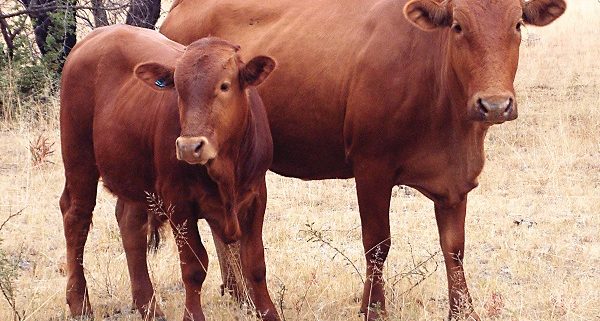Relooking livestock biosecurity – African Farming
Biosecurity is critical for everyone involved in livestock production. It’s especially important considering the contribution of agriculture to livelihoods in South Africa. It’s also widely reported that more than 70% of the world’s poorest countries rely on livestock for survival.
When stakeholders in the red-meat value chain, particularly primary producers, hear the word “outbreak” we justifiably panic. The devastation brought about by a livestock disease of major economic importance like foot-and-mouth disease (FMD) is familiar to many South African livestock farmers. (There are currently outbreaks in the North West, KZN and Limpopo.)
The question is, what have we missed in recent countrywide engagements on biosecurity? Hasn’t Covid-19 raised the bar on biosecurity enough to transfer some of the learnings into our daily livestock production practices?
We will focus on FMD but some of the basic biosecurity measures apply to other diseases too.
WHAT IS BIOSECURITY?
The OIE (International Organisation of Animal Health) Terrestrial Animal Health Code defines biosecurity as a set of management and physical measures designed to reduce the risk of introduction, establishment and spread of animal diseases, infections or infestations to, from and within an animal population.
The impact of an animal disease like FMD due to poor biosecurity can vary from compromised productivity to loss of markets and loss of entire herds and flocks. The cost of investigations into, containment and eradication of the disease adds a further burden to the country’s animal health services.
WHAT IS FMD?
FMD is a highly contagious viral disease of cloven-hoofed livestock (cattle, sheep, goats and pigs)
and cloven-hoofed game. It is considered a herd disease, which means if one animal is sick, the rest of the herd is considered infected. The rapid spread of the disease is one of the reasons governments swiftly move to contain its spread, making early reporting absolutely critical.
WHAT ARE THE SIGNS OF FMD?
Once animals are infected, they take a few days to show symptoms. This is the most dangerous period as they can infect other animals while the owner does not know that they’re sick.
Some animals may display excessive salivation, mouth discomfort, tongue or lip-smacking, chewing, and muzzle and lip lesions (which may start as blisters). The animals may also be lame and reluctant to stand and/or walk. Infected animals may be seen kicking the air and showing some feet lesions. Animals tend to feed less because of the pain of the lesions in the mouth. The clinical signs can be used for a tentative diagnosed, but an accredited laboratory confirmatory diagnosis is crucial.
WHAT EVENTUALLY HAPPENS?
The disease has no treatment, but death is not very common in infected animals, except in young animals and immunocompromised herd members, depending on the strain of FMD involved. Animals that recover from infection may sometimes carry the virus and initiate new outbreaks of the disease later.
CAN HUMANS CONTRACT FMD?
Humans are not susceptible to the disease, and it has never been reported in humans, making it of little concern to public health. It is however important to note that after handling an infected animal one can harbour the virus in one’s respiratory tract for 24-48 hours. This means humans harbouring the virus may pass it onto susceptible animals. Therefore, if you have been in contact with infected or even possibly infected animal(s), you should avoid handling susceptible animal species for at least 5 days.
IS THE DISEASE PREVENTABLE?
Yes, it is. Farmers can start by applying general principles that prevent animal exposure to the virus. Here are some highly effective preventative measures a farmer can consider:
■ Strictly no movement of cloven-hooved animals (or their products) from known FMD areas.
■ A tighter control over people’s access to your livestock and equipment.
■ Controlled introduction of new animals into existing herds, from a reputable source, with a known, vet-checked health status.
■ Regular cleaning and disinfection of livestock pens, buildings, vehicles and equipment.
■ Monitoring and reporting of diseases to your veterinary support structures.
■ Appropriate disposal of manure and dead animals.
■ Disinfecting hands and clothes.
Vaccination against FMD is controlled by government and currently only used in predetermined high-risk areas. The vaccine may only be procured by state veterinary officials through Onderstepoort Biological Products. It’s in the interest of South Africa’s international trade to only vaccinate when absolutely necessary.
One of the ways farmers can help to maintain the health of animals, is to keep livestock well nourished and healthy. This will give them some protection in the event of exposure to contagious diseases. Farmers are advised to vaccinate their livestock against other livestock diseases for which vaccines are available.
WHAT CAN FARMERS DO?
Certain areas of South Africa have been legislated as FMD-controlled areas where measures such as movement control are implemented, and where there is necessary vaccination against the disease.
All owners, managers and persons working with cloven-hoofed animals must be vigilant and keep their herds safe with biosecurity measures.
Owners are responsible for the health of their animals and may be prosecuted under the Animal Disease Act, 1984 (Act No. 35 of 1984) and the Consumer Protection Act, 2008 (Act No. 68 of 2008) if they propagate the spread of FMD.
If you suspect your animals may have FMD, please notify the state vet in your area, your nearest vet, animal-health technician or extension officer. Do not move any animals from the farm until the state vet has confirmed the animals do not have FMD.
Please feel free to contact us at sello.maboe@obpvacines.co.za




Leave a Reply
Want to join the discussion?Feel free to contribute!